#australian cabinetry timber
Explore tagged Tumblr posts
Text
Elevate Your Kitchen - Choosing the Best Kitchen Benchtops Brisbane Northside and Kitchen Benchtop Materials Australia
The kitchen is often considered the heart of the home, and the benchtop plays a crucial role in both functionality and aesthetics. Whether you're renovating or building a new kitchen, selecting the right kitchen benchtops Brisbane Northside is key to achieving a space that’s durable, stylish, and practical. For Australian homeowners, understanding the variety of kitchen benchtop materials Australia has to offer can make all the difference.
In this guide, we’ll discuss popular benchtop options, their benefits, and tips to help you make the best choice for your kitchen.
Why Invest in Quality Kitchen Benchtops Brisbane Northside?
Enhance Your Home’s Value High-quality benchtops can significantly increase the market appeal of your property. Stylish and durable kitchen benchtops Brisbane Northside create a modern and functional space that buyers love.
Durability for Everyday Use Brisbane families need benchtops that withstand regular cooking, cleaning, and socialising. Durable materials ensure your benchtop stays in top condition for years.
Aesthetic Appeal The right benchtop ties together your kitchen design, making it visually stunning while also being practical.
Popular Kitchen Benchtop Materials Australia Offers
Australia provides a wide range of benchtop materials to suit every taste and budget. Here are some of the most popular options:
Engineered Stone This is one of the most sought-after kitchen benchtop materials Australia has to offer. Made from quartz and resin, engineered stone is non-porous, durable, and comes in a variety of colours and patterns. It’s perfect for homes in Brisbane’s humid climate.
Laminate If you’re on a budget, laminate kitchen benchtops Brisbane Northside are an excellent choice. They mimic the look of natural stone or wood and are easy to clean.
Granite and Marble These natural stones offer unmatched elegance and luxury. While they require sealing and careful maintenance, their timeless beauty makes them a favourite.
Timber For a warm, rustic feel, timber is an excellent option. With regular care, timber benchtops bring a natural charm to your kitchen.
Concrete Ideal for modern and industrial-style kitchens, concrete benchtops are durable and customisable. However, they may need sealing to prevent staining.
Stainless Steel Often used in commercial kitchens, stainless steel is a practical choice for those seeking a sleek, professional look.
Tips for Choosing the Right Kitchen Benchtop Materials Australia
Assess Your Lifestyle Families with young children or busy kitchens should opt for low-maintenance and stain-resistant materials like engineered stone.
Set a Budget Determine how much you’re willing to spend and explore materials within your price range. Laminate is cost-effective, while natural stones like marble are a premium choice.
Consider Design and Colour The benchtop should complement your cabinetry, flooring, and overall kitchen style. Neutral tones are versatile, while bold colours make a statement.
Factor in Maintenance Some materials require regular sealing and special cleaning products. Be sure to choose a benchtop that fits your maintenance preferences.
Finding the Best Kitchen Benchtops Brisbane Northside
Homeowners in Brisbane Northside have access to numerous suppliers offering a variety of benchtop materials. Here’s how to find the perfect match:
Research Local Suppliers Look for companies specialising in kitchen benchtops Brisbane Northside. Check reviews and browse their product range.
Consult Professionals Kitchen designers can guide you in selecting the right benchtop material for your space, considering both aesthetics and functionality.
Request Samples Before making a final decision, request samples of different materials to see how they look and feel in your kitchen lighting.
Conclusion
Selecting the ideal kitchen benchtops Brisbane Northside and exploring the variety of kitchen benchtop materials Australia provides can transform your kitchen into a space that’s both beautiful and practical. With options ranging from budget-friendly laminate to luxurious natural stone, there’s a benchtop material to suit every home.
When making your choice, consider durability, design, and maintenance to ensure your benchtop meets your needs and enhances your lifestyle. By investing in high-quality materials, you’ll create a kitchen that’s a joy to use and admire for years to come.
0 notes
Text
Advantages of Domestic Stainless Steel Kitchens

In recent years, stainless steel kitchens have become a popular choice for Australian homeowners, moving beyond their traditional use in commercial kitchens. Known for their sleek, modern appearance and practical benefits, domestic stainless steel kitchens bring a professional touch to the home while offering durability, hygiene, and low maintenance. Whether you’re building a new home or renovating an existing kitchen, incorporating stainless steel into your design can create a visually appealing and highly functional space.
Durability and Longevity
One of the main reasons homeowners opt for stainless steel kitchens is the material’s incredible durability. Stainless steel is resistant to rust, corrosion, and staining, making it an ideal choice for the often harsh conditions of a kitchen. Whether it’s exposure to heat, moisture, or food acids, stainless steel can withstand the daily wear and tear that is common in busy households.
In Australia, where coastal areas can expose homes to salty air and high humidity, stainless steel is particularly valuable as it resists corrosion far better than other materials. This makes it a long-lasting investment for any kitchen, ensuring that your countertops, sinks, and appliances remain in excellent condition for years to come.
Hygienic and Easy to Clean
Hygiene is a top priority in any kitchen, and stainless steel excels in this department. Its non-porous surface means that it doesn't harbour bacteria, mould, or other harmful microorganisms, which is especially important in food preparation areas. This makes it one of the most hygienic materials available for domestic kitchens.
Cleaning stainless steel is also incredibly easy. A simple wipe with a damp cloth and mild detergent is usually all that’s required to keep surfaces clean and shiny. For tougher stains or fingerprints, specialised stainless steel cleaners can restore the material to its original lustre. Unlike wood or laminate countertops, there’s no need to worry about staining or sealing, making stainless steel a low-maintenance option that saves time and effort in the long run.
Modern Aesthetic Appeal
One of the standout features of stainless steel kitchens is their modern, sleek appearance. Stainless steel offers a clean, minimalist look that fits seamlessly into contemporary homes. Its reflective surface can make a kitchen appear larger and brighter, enhancing the overall aesthetic of the space. The cool, metallic finish of stainless steel brings a professional, almost industrial vibe, which is increasingly popular in modern Australian kitchen design.
For those who may find an all-stainless steel kitchen too clinical, the material can be paired with other elements such as timber, stone, or glass to create a more balanced, warm aesthetic. For example, stainless steel countertops combined with wooden cabinetry can create a stylish contrast that feels both modern and welcoming.
Heat and Fire Resistance
Another significant advantage of stainless steel kitchens is their resistance to heat and fire. Stainless steel countertops can withstand high temperatures, meaning you can place hot pots and pans directly onto the surface without worrying about damage. This makes it particularly useful around the stove or oven, where heat exposure is common.
Additionally, stainless steel is non-combustible, which adds an extra layer of safety to your kitchen. In the unlikely event of a fire, stainless steel surfaces will not contribute to the spread of flames, making it a safer option compared to materials like wood or laminate.
Customisability and Versatility
Stainless steel kitchens offer a high degree of customisability, allowing homeowners to create a kitchen layout that perfectly suits their needs. Stainless steel can be fabricated into various shapes and sizes, which means it can be tailored to fit any kitchen configuration. Whether you want seamless, integrated sinks, custom countertops, or bespoke storage solutions, stainless steel can be designed to meet your exact specifications.
In addition to countertops and sinks, stainless steel is commonly used for splashbacks, cabinetry, and appliances. This versatility allows you to incorporate as much or as little stainless steel as you desire, depending on your personal style and the overall design of your kitchen. A fully stainless steel kitchen creates a cohesive, modern look, while a mixed-material approach can add texture and warmth.
Eco-Friendly Option
Sustainability is becoming a key consideration in modern home design, and stainless steel is an environmentally friendly choice for kitchens. Stainless steel is 100% recyclable, meaning it can be reused and repurposed without losing its quality. Many stainless steel products are made from recycled materials, making it a more sustainable option compared to other kitchen materials.
Additionally, because stainless steel is so durable, it reduces the need for frequent replacements, which in turn reduces waste. By choosing stainless steel for your kitchen, you are making an eco-conscious decision that contributes to reducing your environmental footprint.
Cost-Effective in the Long Run
While the initial cost of a stainless steel kitchen may be higher than some other materials, its long-term benefits make it a cost-effective choice. The material’s durability and low maintenance requirements mean that you will save money on repairs, replacements, and upkeep over time. Unlike wooden or laminate countertops, which may need refinishing or replacing after a few years, stainless steel will maintain its quality and appearance for decades.
For homeowners looking to add value to their property, a stainless steel kitchen can be a smart investment. Its modern, professional appearance is highly desirable in the real estate market, and its durability ensures that it remains a valuable feature for many years to come.
Conclusion
Domestic stainless steel kitchens offer a range of benefits that make them an excellent choice for Australian homes. From their unmatched durability and hygiene to their sleek, modern aesthetic, stainless steel is both a practical and stylish solution for kitchen design. Whether you’re seeking a low-maintenance, long-lasting material or a professional, contemporary look, stainless steel delivers on all fronts.
0 notes
Text
Barn House in Australia: A Stunning Contemporary Barn Inspired Home
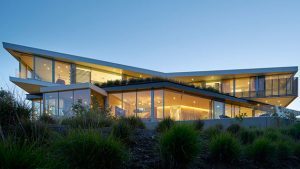
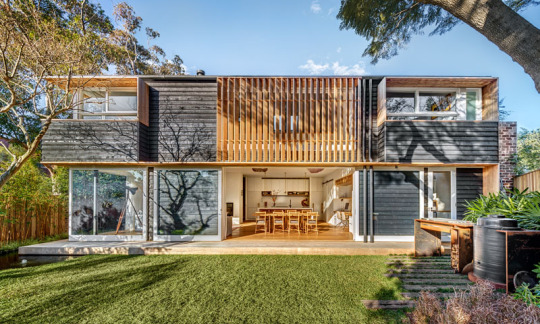
This home in Sydney, Australia, has been designed for a young family that wanted a home that would be robust and persevere the wear of everyday life.

The design of the home, which is located on a triangular shaped lot, was a collaboration between the home owner, the design team from Clayton Orszaczky, and the builder, Robert Plumb Project.
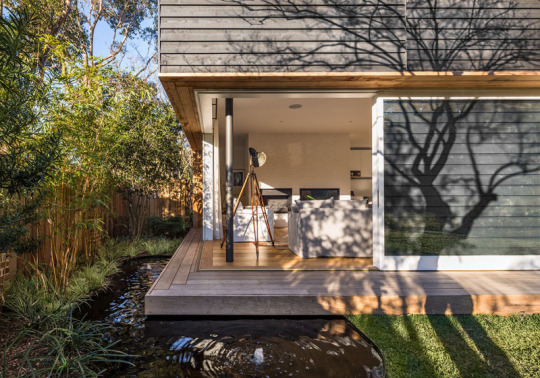
From the street, the house may appear dark because of its color but it is surprisingly bright and open on the inside. The interior is like the exact contrast of the exterior. What you can see here is a comfy looking chair with an ottoman. On the wall is a wooden shelf that has blue colors in it.
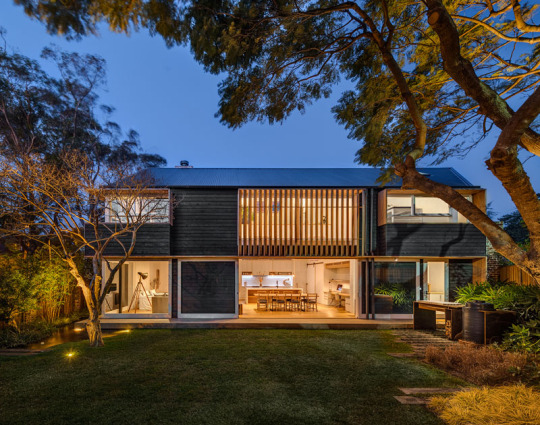
Using a palette of recycled brick, brass, internal timber lining boards, solid timber, and rough sawn tactile cladding reminiscent of shou sugi ban, the home has a contemporary and warm feeling to it.
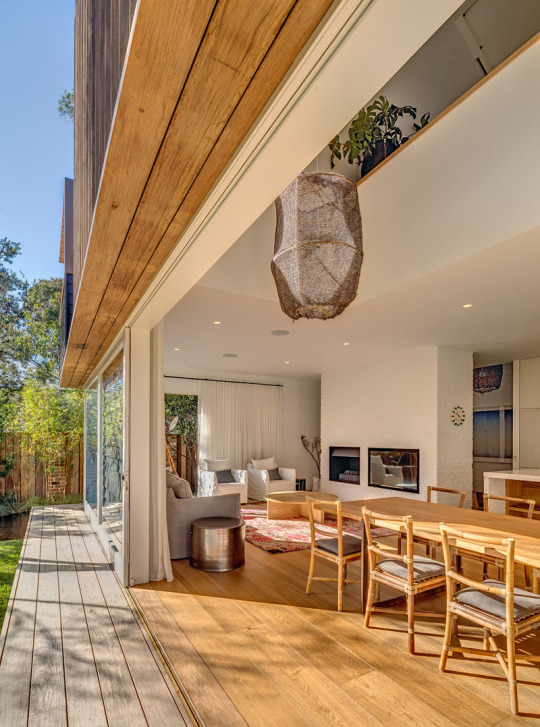
The clients ideas originated from photos of the simple timber hipped roof structures seen in the landscape of Greenland and evolved to absorb influences from traditional Japanese timber architecture and the iconic forms of barn architecture. Read Also: Hupomone Ranch: A Beautiful Contemporary Barn House in California
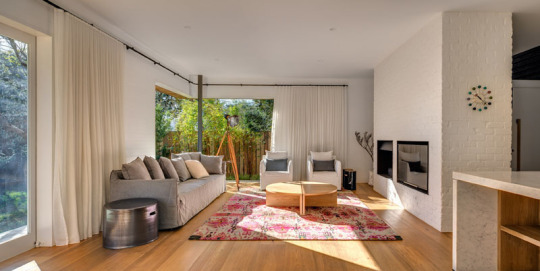
Inside the home, the interiors have been designed by Romaine Alwill of Alwill Interiors. The living area, dining and kitchen all share the same space that’s open to the backyard. A built in fireplace and television make for a cozy living room, and when it gets too sunny, curtains can be drawn to provide shade.
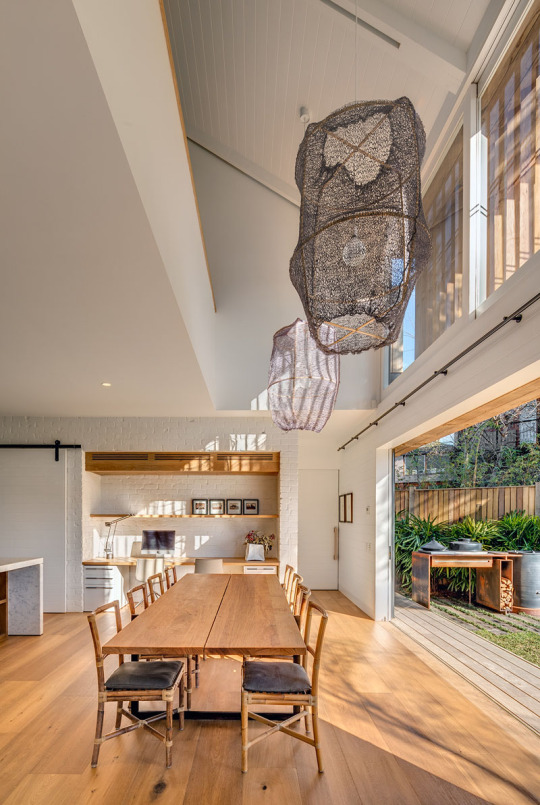
As with many Australian homes, indoor/outdoor living is often included in the design, and in this home they have achieved this by having a sliding doors next to the dining table that open directly to the landscaped backyard, designed by William Dangar and Associates. There’s also a BBQ area for cooking outside.

There’s also an area for working, that’s large enough for two people to work side by side.
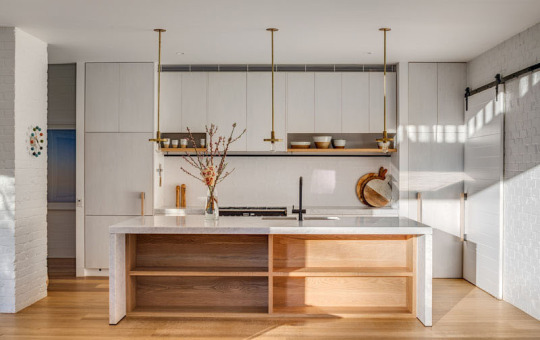
In the kitchen, the island has exposed storage and an overhang makes it possible for people to sit at while helping with food prep.
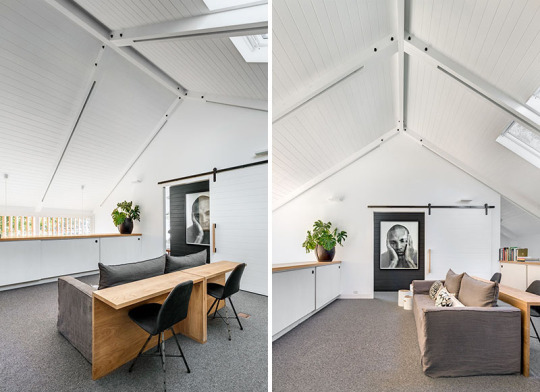
Upstairs, there’s a lounge area where you can see the barn influence, with exposed beams, a pitched roof and skylights.
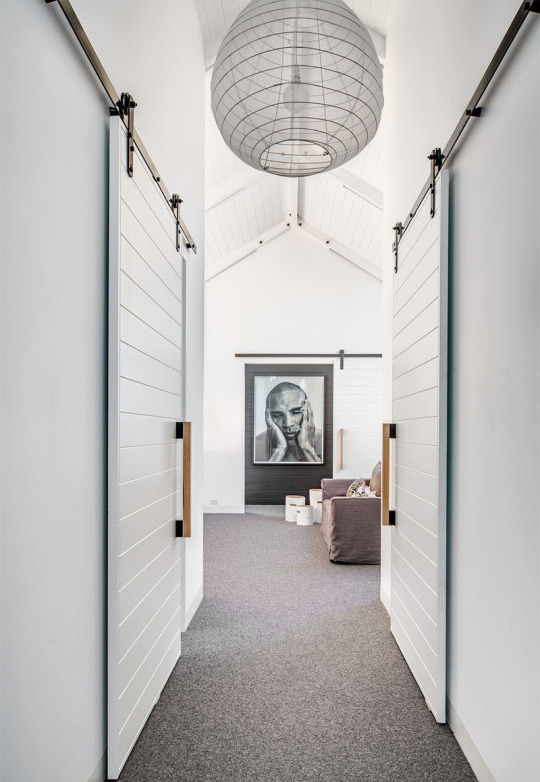
The home owner also wanted barn doors on exposed tracks, brass fixtures, and textured surfaces, which you can see have been included in these next photos.
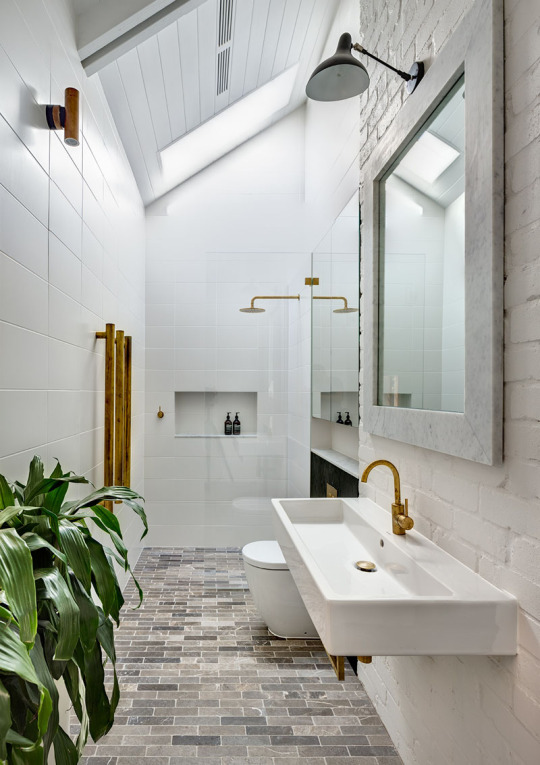
In the bathroom, white walls and ceilings make the brass accents and black cabinetry stand out. A skylight provides plenty of natural light to the space.

In the second bathroom the color palette is the same as the first bathroom, and a bath has been added to the space.
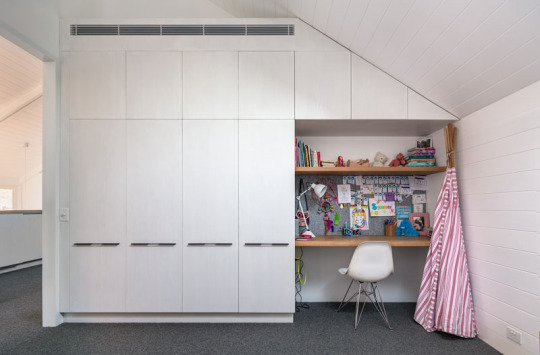
Custom built-in cabinetry makes the most of the space, and a small desk is perfect for homework.
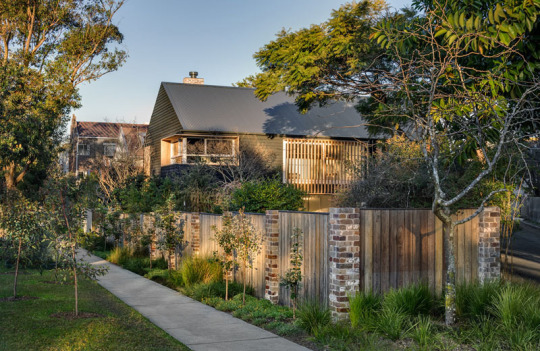
Back outside, here’s a view of the side of the home where you can see that the windows are surrounded by timber shadow rails and screens, and the fence is a combination of wood and bricks to match the home.

On the other side of the home is the garage, surrounded by recycled brick. Who would think that a contemporary barn can actually look this beautiful? This is indeed an amazing project by Clayton Orszaczky who managed to come up with a gorgeous home with a contemporary barn style. You can see that everything in the house is well arranged and it used furniture and decors that fit to the desires of the client. You can also see that it has a nice outdoor surrounding and it would really be good to look at it while inside the house through glass windows. Aside from that, it also used various materials from wood, glass, to bricks. Such a nice home, right? Read the full article
0 notes
Link
Show Stopping Beachside Masterpiece
0 notes
Link
Show Stopping Beachside Masterpiece
0 notes
Text
5 Distinctive Characteristics of the Australian Hamptons Look That Will Truly Amaze Anyone
The Australian Hamptons look is a design style that is characterized by a mix of classic and coastal elements, creating a timeless and elegant feel. The look is inspired by the classic Hamptons style from the United States, but with a distinctive Australian twist. Here are five distinctive characteristics of the Australian Hamptons look that will truly amaze anyone.
1. Neutral Color Palette
The Australian Hamptons look is known for its use of a neutral color palette, which includes shades of white, beige, and gray. This color scheme creates a calm and serene atmosphere, making it ideal for coastal living. The neutral colors also help to reflect natural light, making the interior spaces feel bright and airy.
2. Timber Accents
Timber accents are an essential element of the Australian Hamptons look. Timber is used for flooring, cabinetry, and furniture, creating a warm and welcoming feel. The timber used in this style is often light in color, with a natural or whitewashed finish. This timber is used to add texture and depth to the space, creating a cozy and inviting environment.
3. Woven Textures
Woven textures are another key element of the Australian Hamptons look. These textures are used in soft furnishings, such as cushions, throws, and rugs, as well as in furniture and accessories. Woven textures, such as wicker and rattan, add a natural and organic feel to the space, bringing the outdoors inside. The use of these materials creates a relaxed and comfortable atmosphere, making it ideal for coastal living.
4. Classic Patterns
Classic patterns, such as stripes, checks, and florals, are often used in the Australian Hamptons look. These patterns are used in soft furnishings, such as cushions, curtains, and bed linen, as well as in wallpaper and accessories. The use of classic patterns adds a timeless and elegant feel to the space, creating a sophisticated and refined atmosphere.
5. Coastal Elements
Coastal elements, such as shells, driftwood, and coral, are often used in the Australian Hamptons look. These elements are used in accessories and decor, adding a natural and organic feel to the space. The use of these coastal elements brings the beauty of the ocean into the home, creating a relaxing and peaceful environment.
In conclusion, the Australian Hamptons look is a design style that combines classic and coastal elements, creating a timeless and elegant feel. The use of a neutral color palette, timber accents, woven textures, classic patterns, and coastal elements are distinctive characteristics of this style. The Australian Hamptons look is ideal for coastal living, creating a relaxed and comfortable atmosphere. If you are looking to create a timeless and elegant space with a touch of coastal charm, consider incorporating the distinctive characteristics of the Australian Hamptons look into your home.
0 notes
Text
Joinery Smooth
Website:
Joinery Smooth offers the best bespoke cabinetry services in Phillip Island, VIC. We use the finest timber and Australian recycled hardwoods for our quality craftwork.
1 note
·
View note
Text
McAnally Residence is a project designed by Gavin Maddock Design Studio. The stylishly designed house rises out of the sand dune, overlooking the ocean at Sunshine Beach, on the east coast of Australia, approximately 120km north of Brisbane. Photography by Scott Burrows Photographer.
#gallery-0-6 { margin: auto; } #gallery-0-6 .gallery-item { float: left; margin-top: 10px; text-align: center; width: 25%; } #gallery-0-6 img { border: 2px solid #cfcfcf; } #gallery-0-6 .gallery-caption { margin-left: 0; } /* see gallery_shortcode() in wp-includes/media.php */
.
The structure is terraced up the dune over three levels, accommodating three guest suites on the lower level and the master suite on the upper level. The central level occupies the main living area of the dwelling, with direct access to two terraces and the cantilevered swimming pool.
Circulation between the three levels is a rather dramatic experience and occurs around the double volume entrance lobby, generating a three storey void between the entry platform and the adjacent off-shutter concrete wall. One accesses the building in a downward movement, via a series of stairs, leading one between two concrete walls spaced narrowly together at the front, widening as one proceeds to the entry. The walls form an angled arch two storeys above, with the door occupying the full height at 5,7m.
The finishes palette is restricted to timber, concrete and light grey walls, tiles and stone. A series of double glazed skylights cover the spaces created by the separated forms of the building, providing ample light to the deep structure.
It’s a modern building with warm finishing and beautifully detailed and crafted bespoke cabinetry, with sensational spans taking in the fabulous views to the ocean and the headland to the north east.
Location: Sunshine Beach, Australia Property Area: 653m² Building Area: 520m² Budget: Confidential Building Design: Gavin Maddock Design Studio Interior design: Gavin Maddock Design Studio (GMDS)
CREDITS:
STRUCTURAL ENGINEER: Inertia Engineering @inertiaeng
CONTRACTOR: GVE Construction
SUPPLIERS: Stone: Medusa Stone Cabinets: Fresh Kitchens @fresh_kitchens Frameless Glass & Balustrades: Tewantin Glass @tewantin_glass Double Glazing: Tewantin Glass @tewantin_glass Aluminium Windows & Doors: Hitec Glazing Front Door: Australian Metal Craft @australianmetalcraft, FritsJurgens @fritsjurgens, Bellevue Architectural @bellevue_architectural Sanitaryware: Reece Bathrooms @reecebathrooms Bath: V&A Barcelona Bath @victoria_albert_baths Inwall & Inground lighting: The Lighthouse Noosa @light_house_noosa Drainage channels: Aquabocci @aquabocci
McAnally Residence by Gavin Maddock Design Studio McAnally Residence is a project designed by Gavin Maddock Design Studio. The stylishly designed house rises out of the sand dune, overlooking the ocean at Sunshine Beach, on the east coast of Australia, approximately 120km north of Brisbane.
#bathroom#bedroom#Gavin Maddock Design Studio#house#house idea#houseidea#kitchen#living#McAnally Residence#myhouseidea#outdoor#pool#terrace#villa
6 notes
·
View notes
Photo

New Post has been published on http://malleedesign.com.au/illawarra-festival-of-wood-friday-6th-to-saturday-7th-october-2017-bulli-showground/
Illawarra Festival of Wood: Friday 6th to Saturday 7th October 2017 @ Bulli Showground
We will be at the Illawarra Festival of Wood next month selling our spun copper water bowls and birdbaths. The festival will be showcasing local & regional wood artisans as well as celebrating a variety of wood related crafts & forest industries. The Festival runs from Friday 6th to Saturday 7th October 10am to 5pm
I will also have a selection of Native plants for sale, I will be selling cabinetry timber trees and wildlife attracting natives. I’m exited to announce I will also have a selection of rarer Indigenous Illawarra species grown by backyard local growers, please see the plant list below:
Alectryon subcinereus – Native Quince
Archontophoenix cunninghamiana – Bangalow Palm
Backhousia myrtifolia – Grey Myrtle
Baloghia inophylla – Brush Bloodwood
Claoxylon australe -Brittlewood
Cyclophylum longipetalum – Brush Canthium
Diospyros pentamera –Myrtle Ebony
Elaeocarpus kirtonii – Pigeonberry Ash
Elaeodendron australe – Red Fruited Olive Plum
Gmelina leichhardtii – White Beech
Glochidion ferdinandi –Cheese Tree
Guioa semiglauca – Guoia
Livistona australis – Cabbage Tree Palm
Melaleuca hypericifolia- Red Flowering Paperbark
Melicope micrococca – Doughwood
Parachidendron pruinosum- Snow Wood
Podocarpus elatus – Plum pine
Psychotria loniceroides – Hairy Psychotria
Sarcomelicope simplicifolia – Yellow Aspen
Syzygium paniculatum – Magenta Cherry
Citriobatus pauciflorus (Pittosporum multiflorum) – Orange Thorn
Dodonaea viscosa – Hop Bush
Eupomatia laurina – Bolwarra
Goodia lotifolia – Clover Tree
Hedycarya angustifolia – Native Mulberry
Hymenanthera dentata – Tree Violet
Indigofera australis – Austral Indigo
Macrozamia communis – Burrawang
Monotoca elliptica – Tree Broom Heath
Tasmannia insipida – Brush Pepper Bush
Zieria smithii – Sandfly Zieria
Ajuga australe – Austral Bugle
Billardiera scandens – Apple Dumplings
Crinum pedunculatum – Swamp Lily
Cynoglossum australe – Forest Hound’s Tongue
Deeringia amaranthoides – Deeringia
Dichondra repens –Kidney Weed
Elatostema reticulatum – Rainforest Spinach
Gymnostachys anceps – Settler’s Flax
Hibbertia scandens – Hibbertia – Golden Guinea Vine
Juncus usitatus – Rush
Kennedia rubicunda – Dusky Coral Pea
Lomandra longifolia – Spiny-headed Mat-rush
Morinda jasminoides – Jasmine Morinda
Platylobium formosum – Handsome Flat Pea
Pollia crispata – Pollia
Viola hederacea – Native Violet
Please come and say ‘Hello’, we will be there both days!
#australian cabinetry timber#Bird Bath#Illawarra Festival of Wood#Indigenous to the Illawarra#water bowls
0 notes
Text
Global Builders Warehouse
youtube
Melbourne's leading independent flooring store and supplier of premium SPC Hybrid flooring, Laminate flooring, Timber flooring, Waterproof flooring and Porcelain & Ceramic tile floors. Huge range of kitchen, bathroom & laundry renovation items incl bathtubs, sinks, taps, kitchens cabinetry, custom stone bench tops, toilets and more. Over 1000 items on display. Best selection of colour, sizes and styles to suit every taste. Products have been stringently tested for suitability for Australian market. Best of all - we won't be beaten on price so rest assured - you're getting a great deal every-time you shop with us. Open till 6:00pm - 365 days a year. Fast, next-day delivery within Victoria. Australia-wide shipping available.
Flooring Store Doveton
1 note
·
View note
Text
Do-It-Yourself Laminate Flooring Issues
People who like to do their own flooring may be going for a natural timber appearance. However, it can get annoying to have to frequently sand and finish the flooring. Wouldn’t it be nice to have a grainy floor appearance without needing to acclimatize the floor material after it’s installed? Perhaps you want an organic bronze colour without having to spend a lot of money on the authentic version.
There are so many flooring options to choose from. If you are not sure what to choose, then choose laminate flooring. It is a safe and reliable option which is simple to install because of the latest fabrication methods and modernized laminating machinery. You probably don’t realize that certain technology exists which lets you replicate the aesthetics of a hardwood floor. The best part is that it costs a fraction of the price of the real thing.
The main dilemma when it comes to laminate flooring is choosing the best type. Several flooring types and suppliers exist in the Australian market. One notable supplier is Laminex, which is known for its decorative surfaces and benchtops. They created the attractive Essastone benchtops, which many Australians love. In addition, they’re also laminating floors now too under the Formica range. Since they’re experts in designing state-of-the-art cabinetry surfaces, it wasn’t hard for them to create floors that were equally amazing. Their European based laminate flooring is produced with quality Austrian products. They offer a 30-year warranty for flooring in residences and a 7-year warranty for flooring in commercial properties.
Formica Laminate Flooring resembles natural timber, even though it is not natural. But their laminate flooring provides the same benefits as a real natural timber floor. The only difference is the installation and maintenance are a lot easier. In fact, you can perform the laminate flooring installation yourself. As for cleaning the floors, it only requires a simple mop and vacuum. No professional cleaners are necessary.
The laminate floor surfaces are digitally printed to look like wood. They can replicate the timber grains of the wood perfectly. Every small detail, including the wood patterns and colours, are captured in the laminated prints. Then a textured finish is added on top of the surface to create an even more realistic appearance.
As great as this sounds, there are some concerns over using this laminate technology on your flooring. When you consider the chemical components of the laminate flooring, they could potentially be dangerous for people to be around. Some reports suggest that flooring companies are using a lot of formaldehyde and other carcinogenic substances in their laminate chemical composition.
Fortunately, the Formica products which come from Europe are committed to promoting healthier air quality indoors. That is why they’ve received a GREENGUARD Environmental Institute certification for having low levels of formaldehyde and other VOC emissions. The components of Formica products contain 60% recycled fibres and 30% wood scrap. That means if you use Formica’s laminate flooring products, you won’t have to worry about any dangerous chemical substances being in them. This is great news for people with respiratory issues who want to breathe better and save their health.
Hollow sounds are another problem that can happen when laminating your own floors. Why do these sounds occur? Well, first, you must understand how the floors were originally installed. Underlayment is usually installed on top of a property’s subfloor. The underlayment is a thin layer that covers the floor prior to the lamination process. It is supposed to help guarantee a flat surface on the floor first. In between the subfloor and laminate cover is a small gap. When you step on the surface, the gap causes a hollow sound to be made. If you want to stop this sound, consider the underlayment type which is there and consider replacing it. For instance, an acoustic silent underlayment by Hush Platinum is a good choice. It contains high-density polyethylene that is BCA Code compliant regarding the transmission of sound. Alternatively, you can use Formica’s 12mm plank range, which has a silent underlay under the plank, to reduce sound.
Lastly, do-it-yourself laminate floors have refinishing limitations. But still, it is better than having to deal with authentic hardwood flooring. Think about all the work and money involved in sanding, varnishing, and waxing the hardwood. It’ll cost you about $50 per square meter on average. Also, once you’re done sanding, you’ll need to clean up all those microscopic dust particles which are spread on the floor and in the air. As for varnishing, that’ll force you to stay out of the home for a couple of days.
Why put up with these problems when you can just laminate the flooring and avoid them all? Even though the refinish options are limited, you’ll save a lot of money by using laminate flooring. It is also much faster to install laminate flooring too. You could place 35 square metres down each day of laminate flooring if you really know what you’re doing. But if you are not experienced at placing laminate flooring, then a professional could always do it faster for you. It depends on your confidence level, despite how easy laminate flooring installations can be.
No matter who installs the flooring, you can be sure that laminate flooring is growing in popularity in Perth WA. An increasing number of suppliers are trying to get in on the action by offering better and safer flooring options. You’ll want to choose a supplier which offers all these things in addition to attractive aesthetics. Then you can be sure your laminate flooring will turn out just right. Or you can contact a professional Tiling and Flooring service in Perth .
Source: Men Behaving Handy – Handyman Perth
0 notes
Photo

Credenza is a minimalist credenza created by Australia-based designer Rhys Cooper. Establishing his studio in 2016, Rhys utilises a range of high quality materials and processes working with local Australian industry and craftspeople. Rhys is driven to create dynamic and original work that is a harmonious balance between artistic integrity and producibility. His collection of work looks to create conversation and to start a new dialogue. The credenza is a simple understated storage solution, subtly detailed cabinetry construction paired with a solid timber surface for display items.
19 notes
·
View notes
Text
Glen Isla Home Connects with the Beautiful Australian Landscape


The homeowners wanted a new house on a bayside site with views across Port Phillip Bay to the city. The building is contained to one edge of the site in order to maintain a strong connection with the existing landscape. Aside from that, the owners also want the house to take advantage of the long-distance views.

The materials used in the house are simple, clean and robust. It is designed to engage with the landscape as it grows and defines the property.
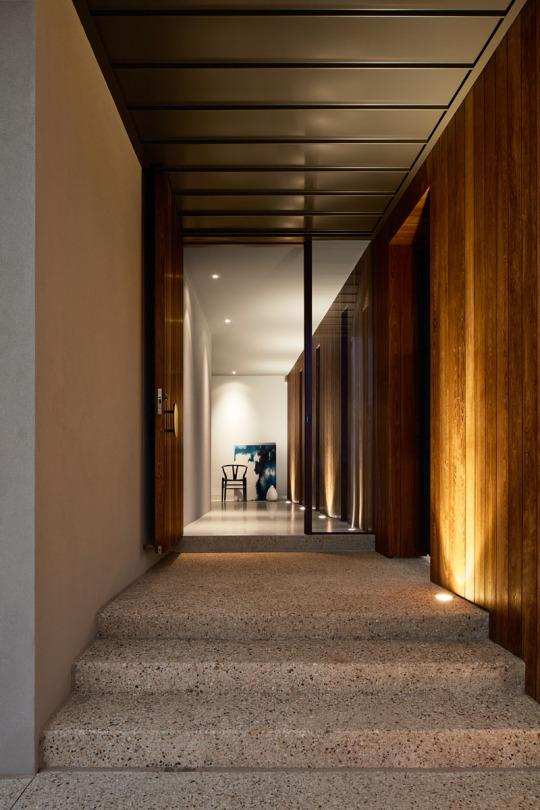
The entryway is tucked behind a timber-clad wall with vertical slot windows. These windows frame the views of the garden and add appeal to it.

A sophisticated weekender, the first floor living reflects the client’s love of food, wine and entertaining. The lower floor is internalized – the muted color palette punctuated by a punch of green identifying the cellar which forms the core of the house.

This is the dining area of the house with white kitchen cabinets and a wooden dining table. It has a floor-to-ceiling window that provide views of the area around it. Read Also: JC House: A Modern Trapezoidal Home in Portugal

The kitchen has a large white island, while dark cabinetry compliments the other dark elements like the dining chairs, counter stools and shelving.
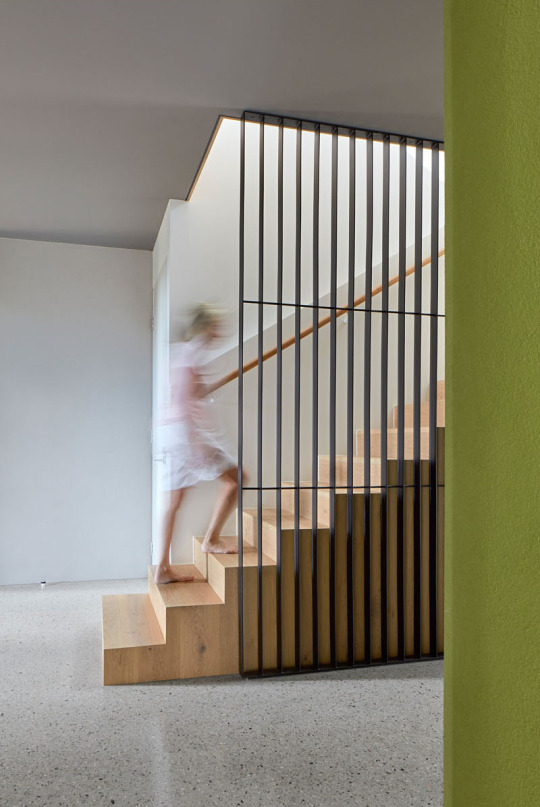
Inside, polished-concrete screed floors and charcoal colored ceilings create a contemporary appearance, while a lime green rendered cellar adds a pop of color. Light wood stairs lead up to the second floor of the home.
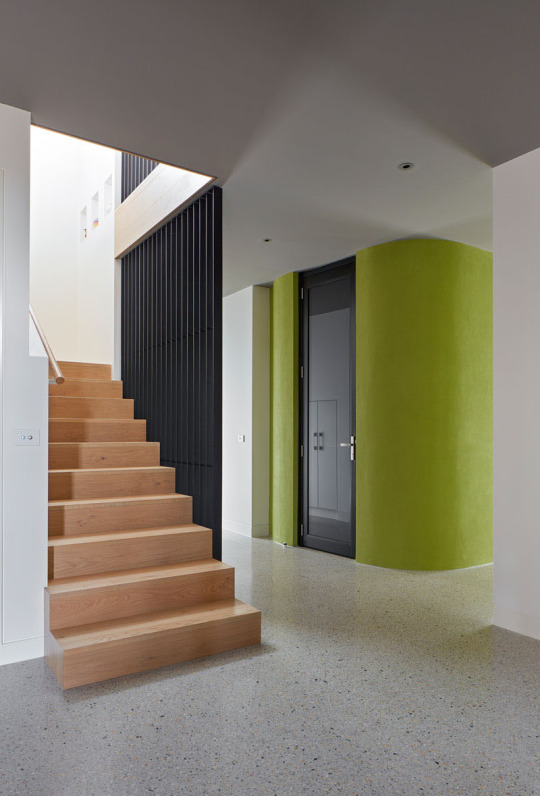
This color is echoed in the first floor carpet as part of a lighter, airier assembly of materials and colors.
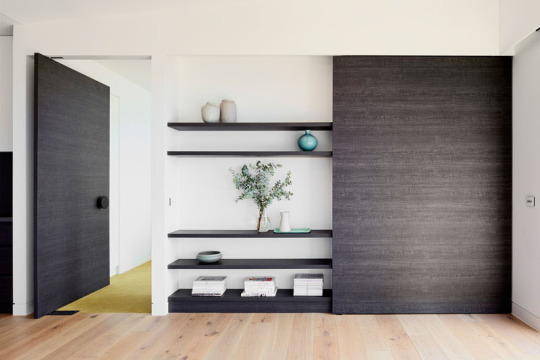
Just off the kitchen and almost hidden within the shelving and kitchen cabinetry is the door to the master bedroom. Green flooring has been used again as a color element in the mostly white interior.
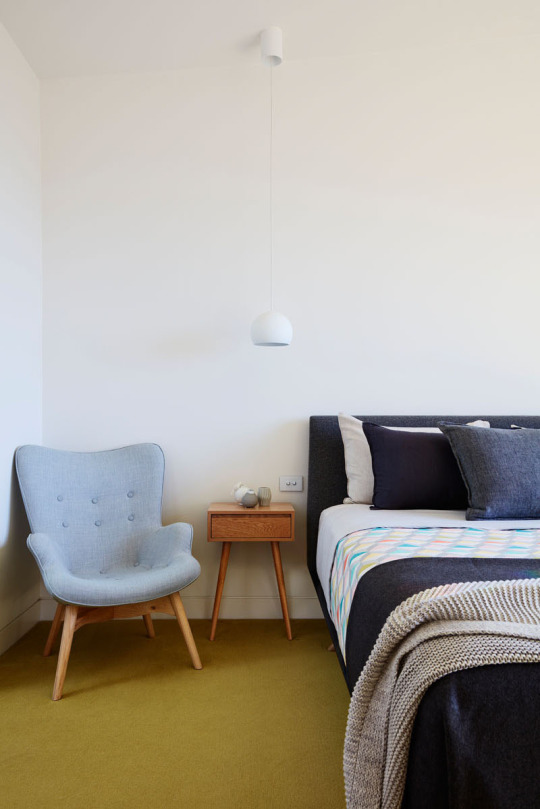
The bathroom is also white with simple modern fixtures in it. It has a long rectangular mirror on the wall which makes it visually larger.
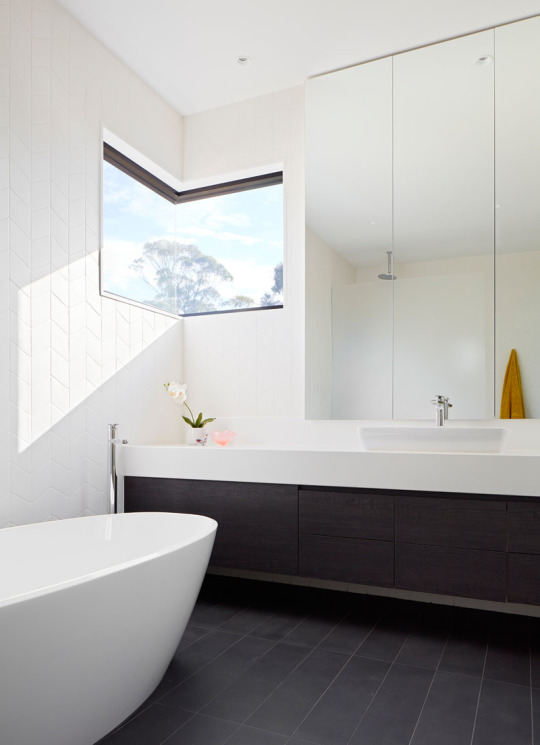
In the en-suite bathroom, a corner window adds natural light and provides a view of the trees, while dark flooring and a dark vanity contrast the white bathtub and white floor-to-ceiling tiles.

In another bedroom, a sliding glass door can be opened to have direct access to the backyard.

In this bathroom, a round mirror hangs on the wall, while white tiles in a chevron pattern cover the wall.
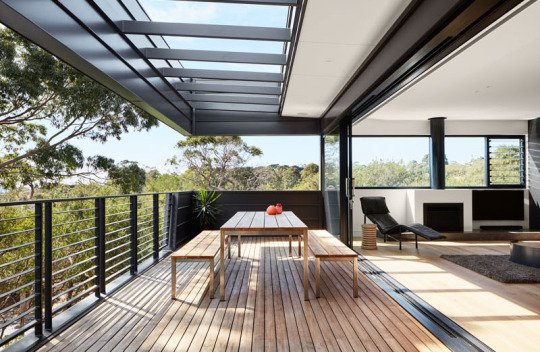
Upstairs is an open floor plan with an outdoor living room. It is located off the indoor living area which has large sliding glass doors that open the space up to the balcony.

Let us take another look at the home’s facade. This looks even more beautiful during the night when the outdoor space and the interior are lighted. The house is designed by Bryant Alsop and with the looks of it, they really did a great job with its layout and architecture. Of course, the interior is very nice too. Another thing that made the house beautiful is its mix of materials as well as the landscaping. You have also seen how it looks like during the night when the lights are turned on. The house used a lovely mix of textures, shapes, and lines which resulted in a simple yet sophisticated modern home. Would you love to have a house similar to this? Read the full article
0 notes
Text
Station House, Hawthorn East Melbourne
Station House, Hawthorn East Building Project, Melbourne Extension Home, Architecture Images
Station House in Hawthorn East
25 Jan 2022
Architects: Bryant Alsop
Location: Hawthorn East, Melbourne, Victoria, Australia
Station House
The refurbishment and extension of Station House for a young family of 4 was driven by the desire to create space and light on a restricted, inner-east site. Carefully balancing heritage, council and building reg requirements the completed design is light-filled, voluminous and provides successful family zoning.
A simple contemporary palette of materials celebrates grey concrete block and standing seam metal cladding. The roof forms are folded to discreetly sit alongside original period roofs, and provide a clear aesthetic contrast to the Edwardian forms. Living spaces are oriented to the north, and extend to an outdoor BBQ deck and planters.
The interior palette follows the simple aesthetic, and brings warmth with the introduction of oak flooring and cabinetry. Restrained use of finishes and repeated details create a calm and sophisticated interior. White and timber cabinets are highlighted with crafted details that elevate the everyday. White perforated metal is used in shelving, leg details, and to stair balustrades and play with light and shadow maximized from the northern orientation.
The original house contains children’s bedrooms, bathroom and laundry. A new addition at ground level provides kitchen, living and dining space. Storage is maximized on a tight lot, with both internal and external storage provided for. An off-street garden space and new landscaped front garden was designed to maximise the site.
On the first floor, the main bedroom, WIR and ensuite, together with a second living space are accessed via an open walkway that overlooks the dining and living areas. The vaulted plywood ceiling folds across this space providing a golden warmth to this generous space. High ceilings and changes in levels result in a dynamic and uplifting home.
Sustainable principles were adhered to. In addition to good passive orientation, performing insulation, glazing and natural ventilation were considered. Aesthetic decisions were underpinned by a sense of practicality, longevity and functionality. This house will endure and enhances a period building that has already housed local families for the past century for many more years to come.
Station House, Hawthorn East – Building Information
Architects: Bryant Alsop
Project size: 225 sqm Site size: 252 sqm Completion date: 2020 Building levels: 2
Photography: Dylan James
Station House in Hawthorn East, Melbourne images / information received 250122
Location: Hawthorn East, Melbourne, Victoria, Australia
Architecture in Melbourne
Melbourne Architecture Designs – chronological list
Melbourne Architecture News
Melbourne Architecture Tours
New Melbourne Properties
Ivanhoe House Extension Architects: Modscape photograph : John Madden Ivanhoe House Extension
Brooks House Design: Bryant Alsop Architect photo : Rhiannon Slatter Brooks House
Melbourne Architect – design studio listings
Architecture in Australia
Australian Houses
Australian Architect
Melbourne Architecture
Ivanhoe Black House Design: Chiverton Architects photograph : Tatjana Plitt
Comments / photos for Station House in Hawthorn East, Melbourne designed by Bryant Alsop page welcome
Website: Melbourne
The post Station House, Hawthorn East Melbourne appeared first on e-architect.
0 notes
Text
Yasmine Ghoniem’s Fabulously Eclectic Bondi Apartment
Yasmine Ghoniem’s Fabulously Eclectic Bondi Apartment
Homes
by Lucy Feagins, Editor

Reeno bench mini from Grazia and Co upholstered in Kiwi Boucle from Pierre Frey. Pion dining table by Sancal from Kezu. Banquette custom designed by YSG made by Materialized (with vintage textiles from Cheesoon and Fitzgerald). Lampe de Marseilles by Le Corbusier from Cul. Antique Moldovianl Kilim Rug from Cadrys. Custom open shelving joinery by YSG with assortment of personal ceramics. Luna Bolster Eggshell cushion by Jardan. Bar niche hand painted by Creative Finishes. Fruit bowl by Timna Taylor from the DEA store. Vase Shigaraki Plateaux Vase from the DEA Store. Stool by Henry Wilson. Artwork ‘Corey Worthington’ by by Nick Santoro from Egg and Dart. Opal Cone Floor lamp by Tom Dixon from Living Edge. Photo – Prue Ruscoe. Styling – Felicity Ng

Womb chair Eeero Saarinen from Dedece in wine mohair. Opal Cone Floor lamp by Tom Dixon from Living Edge. Arie Shelf by E15 from Living Edge.Photo – Prue Ruscoe. Styling – Felicity Ng

Home owner and YSG director, Yasmine Ghoniem! Photo – Prue Ruscoe. Styling – Felicity Ng

Reeno bench mini from Grazia and Co upholstered in Kiwi Boucle from Pierre Frey. Pion dining table by Sancal from Kezu. Banquette custom designed by YSG made by Materialized (with vintage textiles from Cheesoon and Fitzgerald). Lampe de Marseilles by Le Corbusier from Cul. Custom open shelving joinery by YSG with assortment of personal ceramics. Luna Bolster Eggshell cushion by Jardan. Bar niche hand painted by Creative Finishes. Fruit bowl by Timna Taylor from the DEA store. Vase Shigaraki Plateaux Vase from the DEA Store. Stool by Henry Wilson. Photo – Prue Ruscoe. Styling – Felicity Ng

Banquette custom designed by YSG made by Materialized. Vintage textiles from Cheesoon and Fitzgerald. Window treatments made by Solace with textiles from Zara Home. Antique Moldovianl Kilim Rug from Cadrys. Coffee table custom designed by YSG and made by Euro Marble. Ceramic Wall Vase by Felicity Ng. Photo – Prue Ruscoe. Styling – Felicity Ng

Reeno bench mini from Grazia and Co upholstered in Kiwi Boucle from Pierre Frey. Pion dining table by Sancal from Kezu. Banquette custom designed by YSG made by Materialized (with vintage textiles from Cheesoon and Fitzgerald). Lampe de Marseilles by Le Corbusier from Cul. Antique Moldovianl Kilim Rug from Cadrys. Custom open shelving joinery by YSG with assortment of personal ceramics. Luna Bolster Eggshell cushion by Jardan. Bar niche hand painted by Creative Finishes. Fruit bowl by Timna Taylor from the DEA store. Vase Shigaraki Plateaux Vase from the DEA Store. Stool by Henry Wilson. Artwork ‘Corey Worthington’ by by Nick Santoro from Egg and Dart. Photo – Prue Ruscoe. Styling – Felicity Ng

Upper cabinetry in Camel Hide by Dulux. Dot Vase Large from Jardan. Bust Candle by Becker Minty Photo – Prue Ruscoe. Styling – Felicity Ng

Photo – Prue Ruscoe. Styling – Felicity Ng

Custom joinery by YSG made by Xpert Joinery. Lower cabinetry in Deep Reed by Dulux. Calacutta Manhattan marble from Med Marble. Vintage ceramic bowls from the DEA store. Coffee plunger by Jardan. Phoenix Mixer from Sydney Taps. Custom patterned hand painted floor by Creative Finishes. Photo – Prue Ruscoe. Styling – Felicity Ng

‘The palette’s fresh and punchy, but neutral enough to not tire of quickly. The lighter peach ceiling makes it soar upwards,’ says Yasmine. Photo – Prue Ruscoe. Styling – Felicity Ng

Dulux and Porter’s Paints underpin most spaces, layered with stone offcuts on ledges, vintage textiles, and collected treasures. Photo – Prue Ruscoe. Styling – Felicity Ng

‘Swirl Tables’ by Tom Dixon from Living Edge. Table Lamp ‘Bellhop’ lamp by Flos from Living Edge. Photo – Prue Ruscoe. Styling – Felicity Ng

Bed linen by Major Minor from the DEA Store. Nude Linen and Luna Bolster Eggshell pillows by Jardan. Floral Bolster custom designed by YSG for the NGV installation and made by Think Positive. Vintage bed throw by Cheesoon and Fitzgerald. Roy floor lamp in bronze by VBO. Rug by Kulchi. ‘Swirl Tables’ by Tom Dixon from Living Edge.‘Bellhop’ lamp by Flos from Living Edge. Signed photo from the Baz Luhrmann Romeo and Juliet production by Hugh Stewart. Paper Mache mask from Hay. Artwork ‘Still Life’ by Mariusz Zdybalv from The Vault. Photo – Prue Ruscoe. Styling – Felicity Ng

Custom joinery by YSG made by Xpert joinery in Porter’s Paint Biscotti. Kartell Bedside table from Space. ‘Revised Ovington’ lamp from Space. Custom made bedhead by Materialized with vintage fabric from Cheesoon and Fitzgerald. Bed linen by Major Minor from the DEA store. Pillows by Jardan. Floral bolster custom made by YSG for the NGV installation and made by Think Positive. Stansborough wool throw from DEA store. Custom made blinds by Solice. Sunset textiles made by Think Positive for the NGV Installation by YSG. Vintage tapestry artwork on floor from Rudi Rocket.Artwork on wall ‘Barrier Highway, Cobar NSW’ by Robert Gray. Photo – Prue Ruscoe. Styling – Felicity Ng

Floor runner from Kulchi. Stool by Henry Wilson. Custom joinery by YSG made by Xpert joinery in Porter’s Paint Biscotti. Stansborough Wool throw from DEA store. Artwork ‘Mr Tallmadge’ by James King (2015) from Becker Minty. Framed scarf by Kushana Bush from Cheesoon and Fitzgerald. Photo – Prue Ruscoe. Styling – Felicity Ng

Marmarino render on walls. Stone from Med Marble. Joinery custom designed by YSG in Dulux Grey Pail. Wall Shelf from Living Edge. Photo – Prue Ruscoe. Styling – Felicity Ng
You don’t need a large space to create a personal, meaningful home, just look at the dreamy apartment of YSG director, Yasmine Ghoniem!
The designer’s Bondi apartment is just 55 square metres, but every inch is infused with her personality, distinct style, and exceptional use of colour.
Yasmine bought this apartment with her husband Tom Swanson as their first home in 2017. Despite its worn carpet, vinyl, and purple paint, the couple saw potential in its sensible layout (featuring no common walls or internal corridor, ensuring no wasted space) and high ceilings.
Six months of renovations (and numerous design tangents!) followed, although the overall vision remained constant. ‘The emotive sentiment was always the same: creating a retreat where feelings speak far louder than the furnishings,’ Yasmine says.
The interiors were completely overhauled, including new architectural cornices, skirting, bedroom and bathroom joinery. The kitchen was also redone, resulting in Yasmine’s favourite room in the house.
‘It was the most difficult to configure because it was like trying to stuff an elephant into a matchbox,’ Yasmine says of the kitchen. ‘The palette’s fresh and punchy, but neutral enough to not tire of quickly. The lighter peach ceiling makes it soar upwards.’
Opposite the kitchen is the new built-in living room lounge that Yasmine chose instead of a traditional sofa, so as not to overwhelm the space. ‘I had to economise on furniture selections so as not to clutter the floors and walls too much… This way I could control ratios,’ she explains.
If you’re familiar with Yasmine’s work, you’ll know colour is everything, and her home is no exception. ‘No blonde woods and maritime or navy blues, and certainly no all-white palette – that’s sooo not YSG!’ she says.
Dulux and Porter’s Paints underpin most spaces, layered with stone offcuts on ledges, vintage textiles, and eclectic furniture pieces. A delightful feature is the painted kitchen and entry floor – a richly detailed tapestry of salmon pink, hand-painted on the original timber floorboards by long-term YSG collaborators, Creative Finish Sydney.
‘At its very core, my outlook is nourished by the layers of my culture’ says Yasmine of her design aesthetic. ‘Mum’s Australian, Dad’s Egyptian, and I grew up between Kuwait and Saudi Arabia, with a few years in between in Australia and a stint in America for studies and work post my schooling days,.’
While a feast for the eyes, this richly layered, tactile space is also remarkably comfortable, inviting Yasmine and Tom to flop into a state of complete relaxation when they swing open their front door.
Yasmine says the home only continues to improve over time, in keeping with her design ethos. ‘Every space I design always looks better six to 12 months after I hand over the keys because humans leave the most incredible scents and traces. You can’t buy that.’
0 notes
Text
North Bondi House in Sydney fronted by angular white gabled screens


James Garvan Architecture has added gabled timber-batten screens to the facade of this house in Sydney, which is meant to mimic the form of a neighbouring property. The two-storey house in the back streets of North Bondi, a coastal suburb in eastern Sydney, has been overhauled by local studio James Garvan Architecture.

It was previously fronted by an obtrusive garage in the driveway and needed to be visually reconnected with homes along the street. Its owner, a young man that often invites friends and family over, also wanted the house to have a more welcoming appearance on approach.

The garage has been knocked down to open up the house to the streetscape. Its facade now comprises a series of gabled and half-gable screens made from white-painted timber battens. They've been specifically arranged to mimic the geometry of the property next door.

"The unadorned frontage gives primacy to the purity and clarity of the three staggered gabled forms whilst still maintaining a formal connection with its neighbour," founder of the studio James Garvan explained. "The crisply-detailed simple forms of the front facade offer an alternative to the traditional Bondi semi and along with it, a sense of advancement."

The openness of the house front is playfully contrasted by the fact that the screens simultaneously hide the home's interior. Part of the first gabled screen can be slid back to reveal a front door and porch. Other panels discretely incorporated in the screens can be pushed back for additional fresh air.

Inside, the studio has improved the formerly gloomy living spaces by creating a large void in the kitchen ceiling. Sun rays that stream in through new skylights in the home's roof are now able to reach the ground floor. A majority of surfaces, including the original exposed-brick walls, have also been painted white to keep a bright and airy atmosphere.

Lisa Tackenberg was brought on board to help develop the aesthetic of the rooms, which have been decked out in simple materials. Wood has been used to make the treads of the stairs and the kitchen cabinetry, which is fluted to match the appearance of the gabled screens on the exterior.

Concrete has been used for elements such as the breakfast island and bathroom sink. "The restrained material palette relies on variety in texture and pattern, and their interaction with light and space to provide a level of richness and vigour to the project," added Garvan. A large opening has also been created in the rear of the house to give inhabitants easier access to the pool and garden.

James Garvan Architecture is based in Double Bay, Sydney. The Australian city is host to several homes with striking facades – others include Glebe House by Chenchow Little Architects, which is punctuated by upside-down arches. Brougham Place by Smart Design Studio also boasts a stripy exterior composed of brightly coloured louvres. Photography is by Katherine Lu. Project credits: Architect: James Garvan Architecture Client and builder: Tom Cull of TC Build Interiors in collaboration with: Lisa Tackenberg The post North Bondi House in Sydney fronted by angular white gabled screens appeared first on Dezeen. Source link Read the full article
0 notes